Climate change is front page news again. This time it’s the colossal wildfires ravaging Australia. Last year, it was devastating flooding in the UK, a massive ‘bomb cyclone’ in the US and a deadly monsoon in The Philippines.
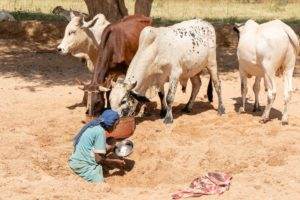
What is least likely to be front page news is the effect of the climate crisis in Darfur, where more people died last week as a result of drought-related conflict than in the Australian bush fires.
This is not the first time violence has erupted in this region. At the turn of the century, more than 300,000 people died in what has been described by many, including former UN Secretary General Ban Ki Moon, as the world’s first climate-change war.
The effects of a drought take months to manifest themselves. Victims suffer slowly and become reliant on handouts from family members who have been forced to migrate, or the World Food Programme. Whole communities are left with no men of working age and women are forced to work 18 hour days just to survive. Deserts steadily creep into farmland, traditional crops wilt and die, villages empty and the never-ending growth of urban slums continues relentlessly.
For people in Australia, the UK and the US recovering from the effects of climate change is pretty terrible. It is difficult to imagine how awful it must be to have to rebuild your home after it has burnt to the ground or clear it out after a river has run through your lounge. But at least there is a support system – via insurance companies that will cover their costs and a Government they know will assist them in a crisis.
For drought victims in Africa – normally women living hand to mouth in the most remote regions of the most unstable countries in the world – there is no easy way of reaching or helping them. For them climate change is silently catastrophic. And this makes theirs a difficult story to tell.
The Climate reality in Sudan today
Recently I was in Darfur, Sudan and evidence of the appalling effects of climate change are everywhere. Remnants of homes, burnt and forcibly emptied in the civil war litter the countryside. The UN continues to have a heavy presence in the region and people from all sides of the dispute are visibly distressed if the conversation ever strays into what happened.
Thankfully, the situation in the region has calmed down, but huge pressures remain, challenging the current status quo. Day after day I visited families torn apart by climate change. I witnessed villages being consumed by the desert. I saw the mass movement of people forced into refugee camps by conflict over natural resources and I saw the fragile peace threatened by ongoing shortages of water and natural resources.
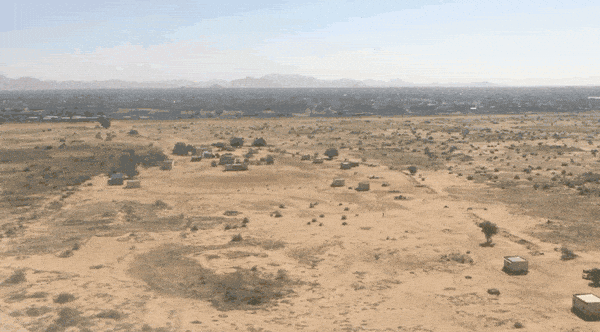
Desertification is killing Darfur. Trees, which used to hold back the creeping sands of the Sahara, are no longer there. Nearly all have been chopped down as farmers return to their villages and rebuild the homes that were razed to the ground during the civil war.
Sand attacks homes by piling up on the wooden fences and eventually pushing them over. Initially, the household will build another fence inside this one, but the process happens again and again and eventually, the family are forced to abandon the home completely and move.
The dire consequence of this was best summed up by Suad Allah, from Kafod – a big village about an hour’s drive from the state capital El Fasher. Suad was born and raised in Kafod and is part of the association which helps keep a governance structure in place there.
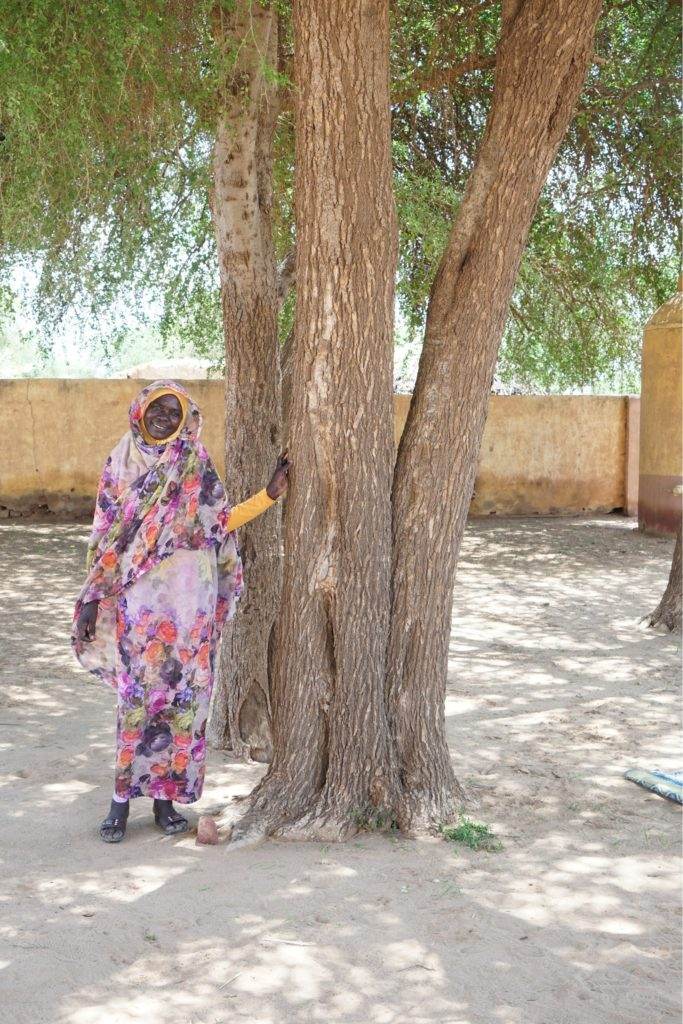 Not only is she incredibly well respected by others in the village, Suad can see quite clearly what the impact of the combination of the previous conflict, climate change and now the uneasy peace in the region could have on her community. She told me how people had been displaced when conflict began around 17 years ago. She and her neighbours hid in the bush near to the village as it was burned to the ground then moved to the safety of refugee camps in the state capital.
Not only is she incredibly well respected by others in the village, Suad can see quite clearly what the impact of the combination of the previous conflict, climate change and now the uneasy peace in the region could have on her community. She told me how people had been displaced when conflict began around 17 years ago. She and her neighbours hid in the bush near to the village as it was burned to the ground then moved to the safety of refugee camps in the state capital.
Then, as the conflict slowly died down, people returned and they had to rebuild their houses, but this very act of returning, combined with climate change and desertification is now turning into an even bigger threat to the traditional ways of life here.
She said: “The way that people are constructing houses here is dependent on trees. We have dry trees which we use for fencing. We can get hold of machines to make bricks and we need to use them more. We are trying to reach out, but we haven’t got the skills to do so. “So because of the war we lost a lot of our trees.
“And now I am worried that people will be displaced forever because of the desertification. We want to be able to rebuild the environment here to keep people staying in the village. “It is just very frightening and tough to see that we are going to lose this place again. Maybe for good.
“My family has been here for generations. I feel a part of this place. I don’t want this place to be abandoned because it is turned into a desert. I want to do everything we can to stop this.”
Suad is one of dozens of people I met who knew exactly what they needed and were desperate to help themselves and their communities flourish in their new climate reality.
Climate change and ‘unpredictable rains’, or, “months of no rain, followed by a deluge which causes so much damage you end up looking forward to drought again”, are reigniting the huge tensions between different ethnic groups in the region.
Lack of rain is causing swathes of pastureland to not grow anymore and hafirs, or small lakes, to dry up. Pastoralists who have traditionally relied on both to feed and water their animals are no longer keen to carry on their traditional ways of life. Many have swapped cattle with hardier camels and move just once or twice a year.
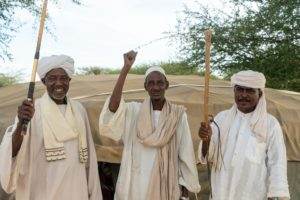
For farmers, heavy rain not only washes away topsoil and causes flooding causing land which used to be farmed to become barren, but lack of sustained rain means traditional staple crops like sorghum and millet no longer grow.
That means there is huge pressure on the areas that can be farmed, which raised tensions to a level shortly after the turn of the century which helped lead to the deadly civil war that gave Darfur its notoriety (a Government decision to arm one group of people against another certainly made the situation worse).
Now, with pastoralists settled on land previously farmed and with farmers returning to land no longer farmable, tension is rising again.
However Suad, and hundreds more farmers and pastoralists are so desperate to keep their homes and their families together they have been willing to meet with the very neighbours they have violently clashed with in the past via peace workshops run by Practical Action. These workshops are intended to help warring parties to agree how farmland and water should be used and how to deal with those who flout these agreements.
Rising tensions
One woman who attended one such workshop – a midwife and part-time farmer called Fatima Suileman – told me how just days before, pastoralists had beaten her friends after they had tried to stop camels and sheep eating newly grown mustard plants. She was furious, but decided that a different approach was needed if the situation was ever going to change.
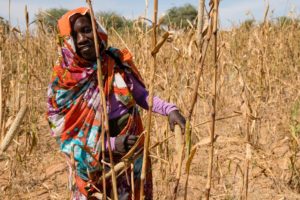
Her story was not a one off. Another time, I attended another incredibly tense meeting held in a dark pastoralist tent in a settlement near Kepkabiya. The village was in the shadow of some of the most appalling evidence of the ethnic cleansing in the region.
There, Wasela Mohamed Nour, a 45-year-old farmer and mum bravely asked why a pastoralist had attacked her friends after they had confronted him for allowing his animals to enter their land and eat their harvest. What followed was a lot of raised voices, a visible power imbalance and a brief glimpse into the tensions which threaten Darfur every day.
Once the shouting died down, it became clear the pastoral leaders were also in a difficult position. They no longer wanted to lead a traditional nomadic lifestyle leaving them with no access to drinking water, education, or even the limited healthcare available in Darfur. That change in lifestyle meant they needed better access to stable sources of water, pastureland and food to keep them and their animals healthy. And all three are becoming more and more scarce, hence the desperate measures taken by some pastoralists.
As both sides explained their situation, I couldn’t help reflecting that for many of us in the global north, climate change is something we try to reduce by eating less meat, buying electric-powered cars or renewable electricity. For others, climate change is already having extreme consequences. Indeed, many of the victims of the wildfires in Australia vividly described the dark, red skies and barely breathable air as being ‘like armageddon’.
In Australia 25 people have died as a result of the terrible fires and 2,000 homes have been destroyed. The number of deaths in the world’s first climate change war in Darfur is conservatively estimated at around 300,000. Hundreds of thousands more lost their land and their homes. If climate change causes another return to conflict there, or a situation where people can no longer viably live there anymore, for me, that would represent a true climate armageddon.
This doesn’t have to be the end of the story though. By working together, we can turn the tables on climate change.
Donations will go directly to bringing lasting peace and prosperity to communities in North Darfur, and will enable the communities Practical Action work with around the world to turn the tables on climate change.